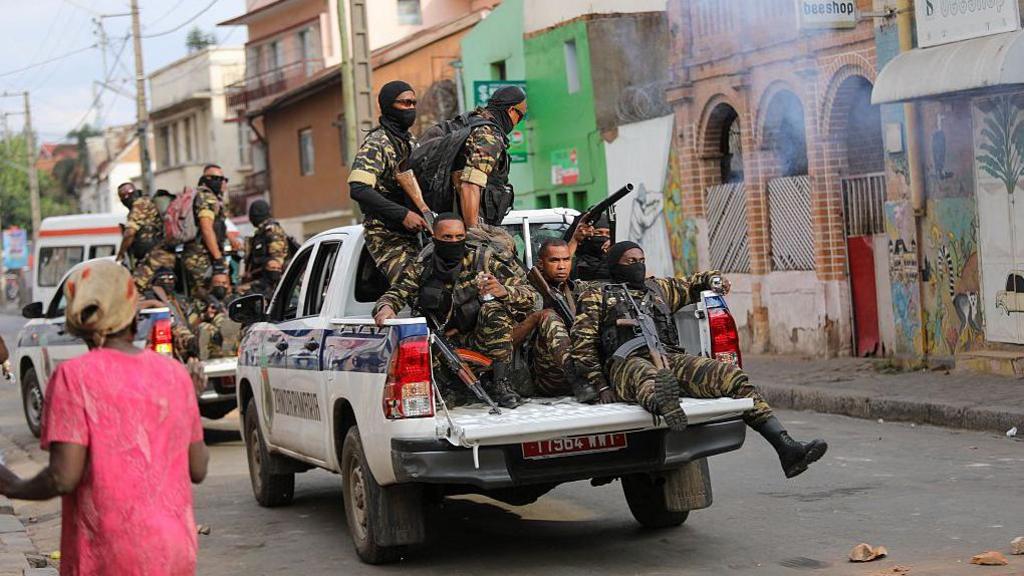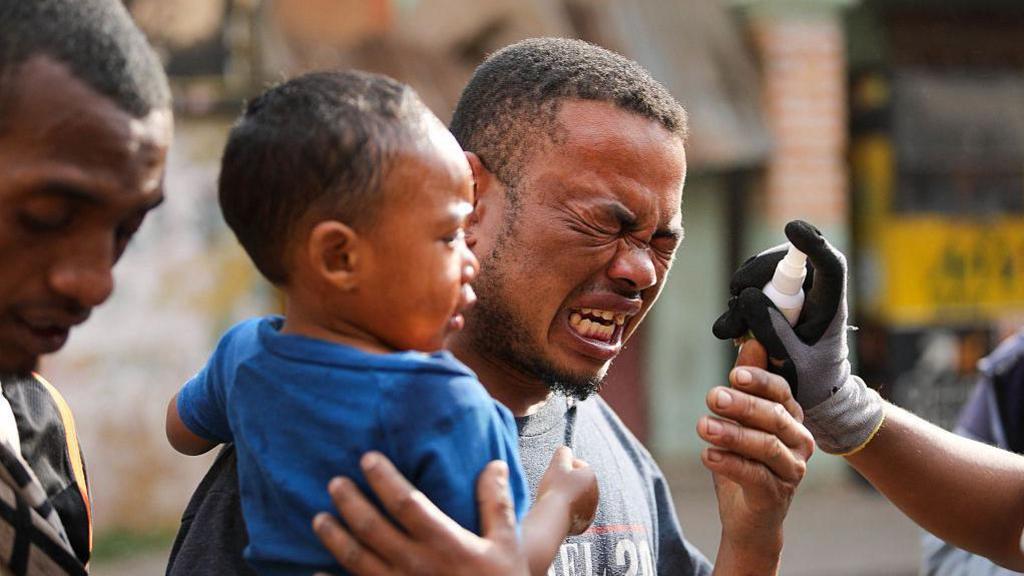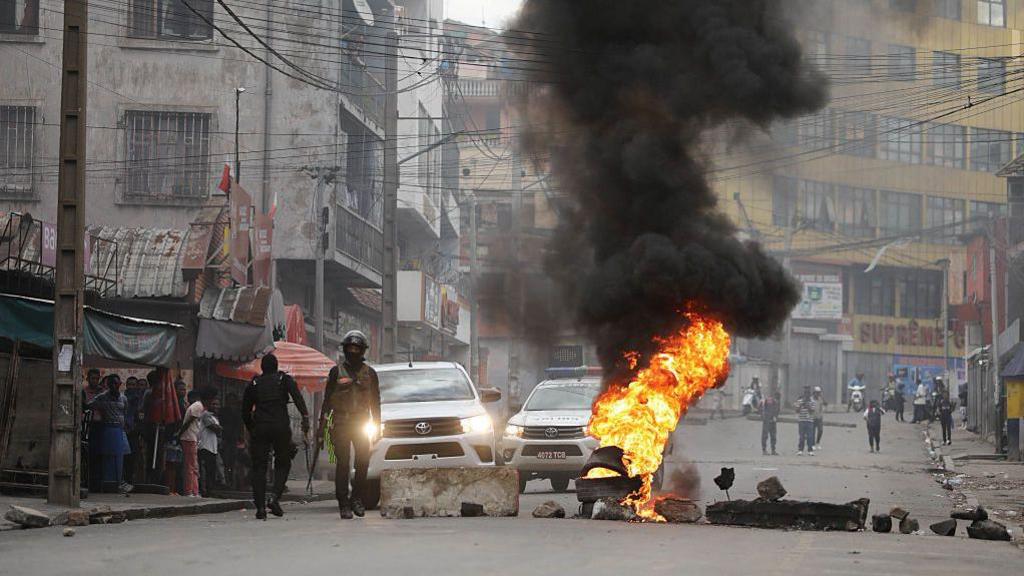Behind the Gen Z protesters who want to force Madagascar's president from power
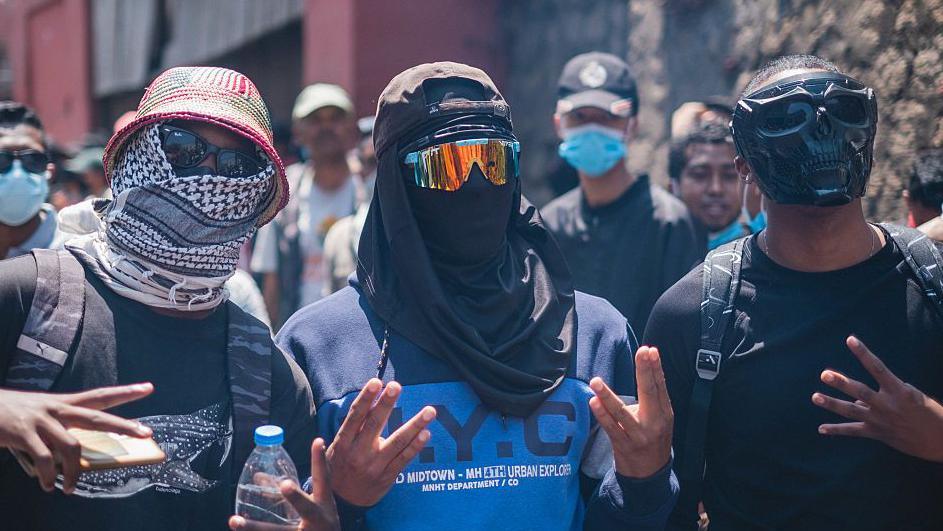
- Published
Thousands of people in Madagascar have taken to the streets in different parts of the country for the past week in the largest wave of protests the Indian Ocean island nation has witnessed in more than 15 years.
What began as anger over shortages of basic necessities has rapidly escalated into one of the most serious challenges facing President Andry Rajoelina, who has been in power, for the second time, since 2018. On Monday, in response, he sacked his government but that did not placate the protesters, who now want him to go as well.
At least 22 people have been killed and more than 100 others injured in the unrest, according to the UN, although the Malagasy government has dismissed those figures and described them as based on "rumours and misinformation".
What sparked the protests?
- Image source, AFP via Getty Images
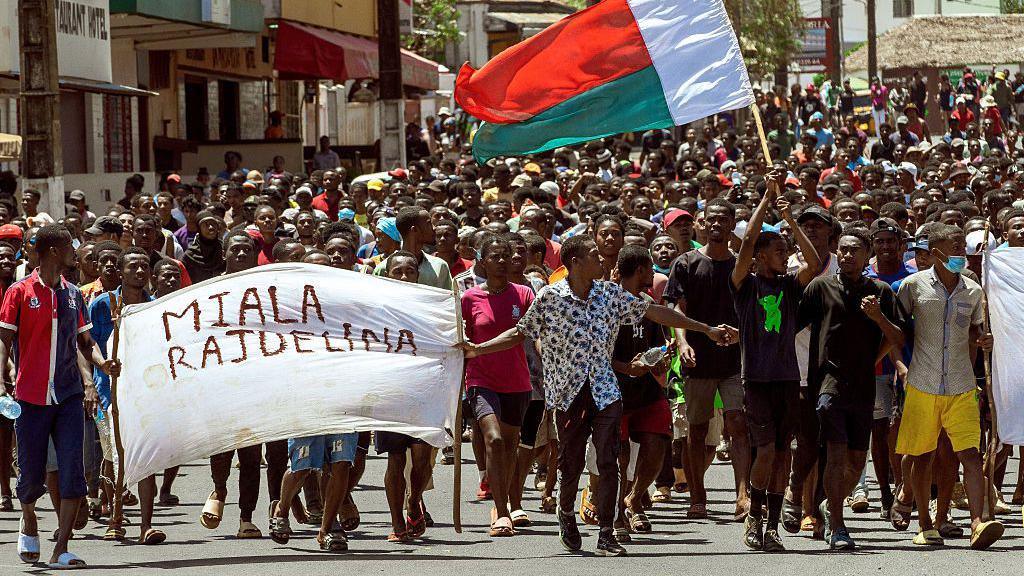
Image caption, The protests have developed into a direct challenge to the president - the banner says "resign Rajoelina"
1 of 4
Pressure started to build following the arrest on 19 September of two leading city politicians, who had planned a peaceful demonstration in the capital, Antananarivo, over chronic power and water supply problems.
There have been hours-long daily outages of the services run by state-owned utility company Jirama.
Many saw their detention as an attempt to silence legitimate dissent leading to public outrage, with the cause taken up by civil society groups and the formation of a youth-led online movement known as Gen Z Mada.
The protests have since spread beyond Antananarivo, gripping eight other cities across the island, with no signs of subsiding.
Waving banners, protesters have denounced the blackouts and accused the government of failing to guarantee basic rights.
Activists have also blamed widespread corruption within the power company for the electricity crisis.
Who is demonstrating?
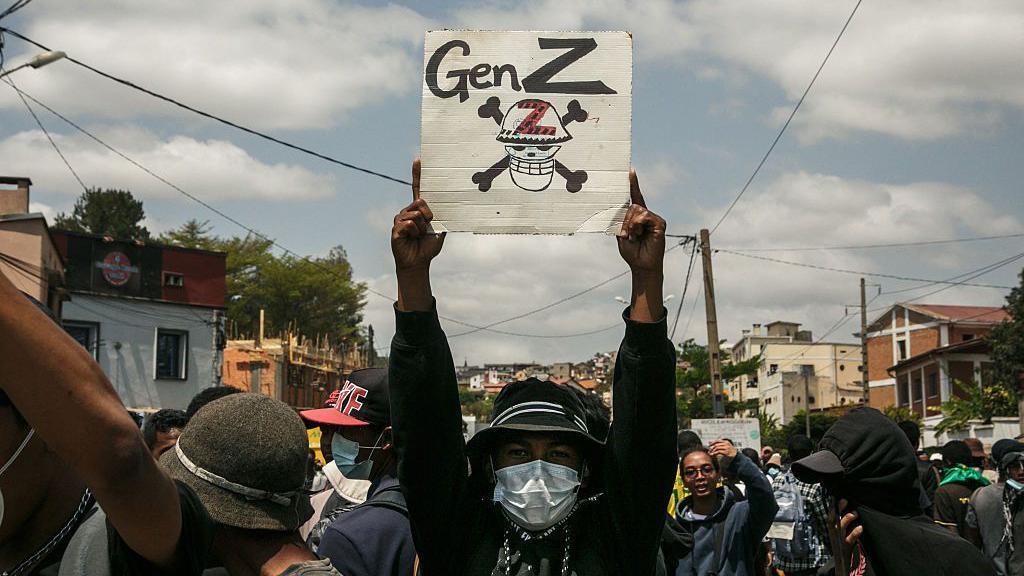
Gen Z protesters have now been joined by others
Initially, Gen Z Mada was co-ordinating what was going on through social media sites such as Facebook and TikTok. A committee was created to organise further demonstrations following a meeting between Gen Z Mada, civil society groups and local politicians.
Other groups got involved once the protests started. Several labour unions, among them the country's largest, the Malagasy Trade Union Solidarity, have thrown their weight behind the youth-led movement.
Civil society organisations have called for church-led talks to "prevent Madagascar from sinking into chaos or civil war".
Opposition leader Siteny Randrianasoloniaiko and former President Marc Ravalomanana voiced their support for the protests in a rare joint statement on Wednesday.
The two have declined offers to join Rajoelina's government, saying the move would be a "betrayal" of the Malagasy people.
What do the protesters want?
The demonstrators have not issued a manifesto but what started with anger over public services has evolved into broader demands for political change.
Many young people, facing insecure and poorly paid jobs, have called for the president's resignation, blaming him for the problems they are facing.
On Wednesday, the demonstrators in the capital were seen waving flags and banners with the words "Rajoelina out".
A spokesperson for Gen Z Mada told the AFP news agency that they wanted the president to step down and "the cleaning up of the National Assembly".
They also want Rajoelina to take responsibility for those who were reportedly killed by security forces.
Some social media users have also called for the dissolution of the election commission and the country's top court.
What is the government's response?
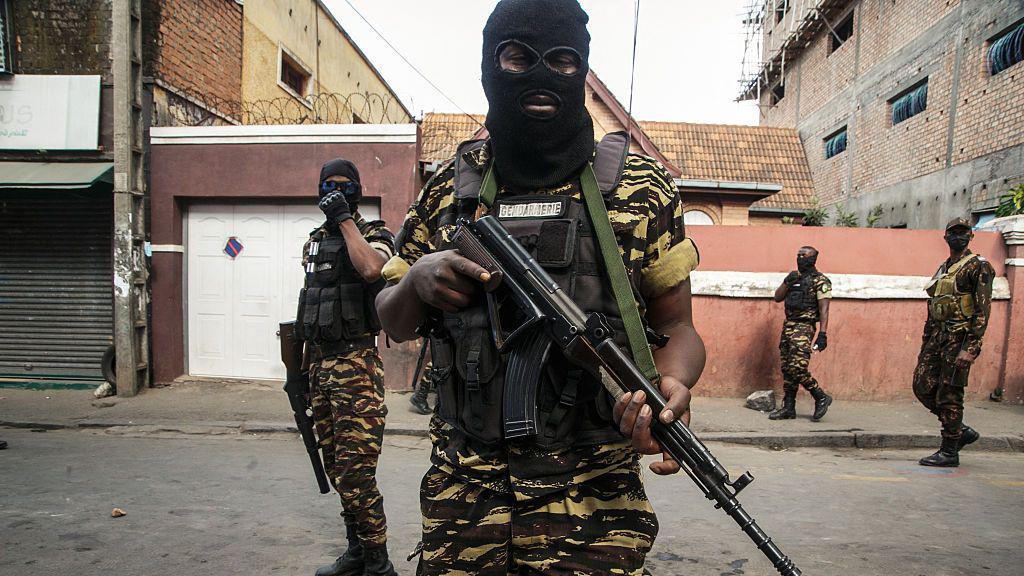
The UN says at least 22 people have died - a figure disputed by the authorities
Security forces have maintained a heavy presence across Antananarivo and other major cities, with police using tear gas and water cannon to disperse the protesters.
A dusk-to-dawn curfew was imposed in the capital after reports of violence and looting, including the torching of the finance ministry's offices.
Rajoelina initially made attempts to placate the protesters, such as sacking his government, calling for dialogue with young people and pledging that the World Bank would fund efforts to address the power outages.
But when these steps failed to put a stop to the demonstrations, his tone changed.
In an address livestreamed on his Facebook page, Rajoelina alleged that the protesters had been "exploited to provoke a coup" and that foreign forces were financing the movement to oust him.
Schools across the capital and nearby districts were closed last week, for fear of escalating violence.
Authorities maintain that gatherings without formal authorisation pose risks to public order.
What is life like in Madagascar?
Madagascar is one of the poorest countries in the world, with 75% of people living below the poverty line, according to the World Bank.
Only about one-third of Madagascar's 30 million people have access to electricity, according to the International Monetary Fund.
One demonstrator told AFP that "living conditions of the Malagasy people are deteriorating and getting worse every day".
Is the president under threat?
Political scientist and human rights activist Ketakandriana Rafitoson told the AFP news agency the demonstrations risked dragging on and intensifying if authorities rely on force to suppress dissent instead of prioritising accountability.
She said the "outcome risks political fragmentation, stronger nationalist rhetoric against perceived external interference, and possible economic fallout".
But in imposing curfews and dismissing UN casualty reports, the government could be signalling that it may double down on repression rather than compromise.
Analysts say control over state media and key institutions could allow Rajoelina to outlast the immediate wave of dissent.
Governance experts say a critical tipping-point would be whether the military refuses orders to crack down on protesters.
Presidential spokesperson Lova Ranoromaro said on social media that "we do not want a coup d'etat, because a coup d'etat destroys a nation, because a coup d'etat destroys the future of our children".
Madagascar has been rocked by multiple uprisings since it gained independence in 1960, including mass protests in 2009 that forced former President Ravalomanana to step down and saw Rajoelina come to power for the first time.
Rajoelina was voted back into office in 2018 and re-elected in 2023 in contested polls boycotted by the opposition.
More about Madagascar from the BBC:

Go to BBCAfrica.com, external for more news from the African continent.
Follow us on Twitter @BBCAfrica, external, on Facebook at BBC Africa, external or on Instagram at bbcafrica, external
Related topics
BBC Africa podcasts
- Attribution
